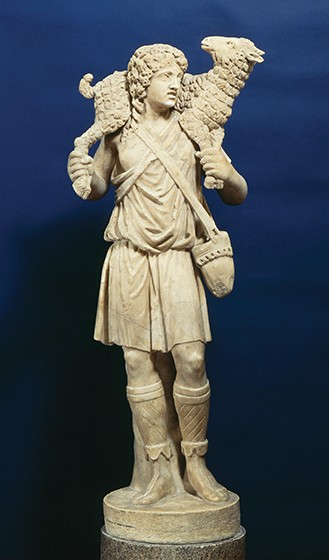The Good Shepherd, early fourth century, Museo Pio Cristiano, Vatican

The image of God as a shepherd watching over the flock of covenant people is a popular image in the Jewish scriptures. The image is transferred to Jesus in early Christian writings (John 10:1–18) and is adopted as a title for church leaders (e.g., 1 Pet. 5:2–4). There are some 26 extant marbles from antiquity depicting Jesus as the Good Shepherd. The figure is usually beardless and youthful and carries a sheep draped over the shoulders. The sculptor of the figure here drew not only on biblical literary sources to present Jesus as a loving shepherd but integrated motifs from pagan culture. A source for the Good Shepherd may be the pagan figure of the criophorus (the “ram-bearer”), often shown bringing an offering to the altar. The artist also incorporated the contrapposto stance, made known by the Greek sculptor Polykleitos in the fifth century BC, with one weight-bearing leg straight and the other bent naturally as the weight shifts.




